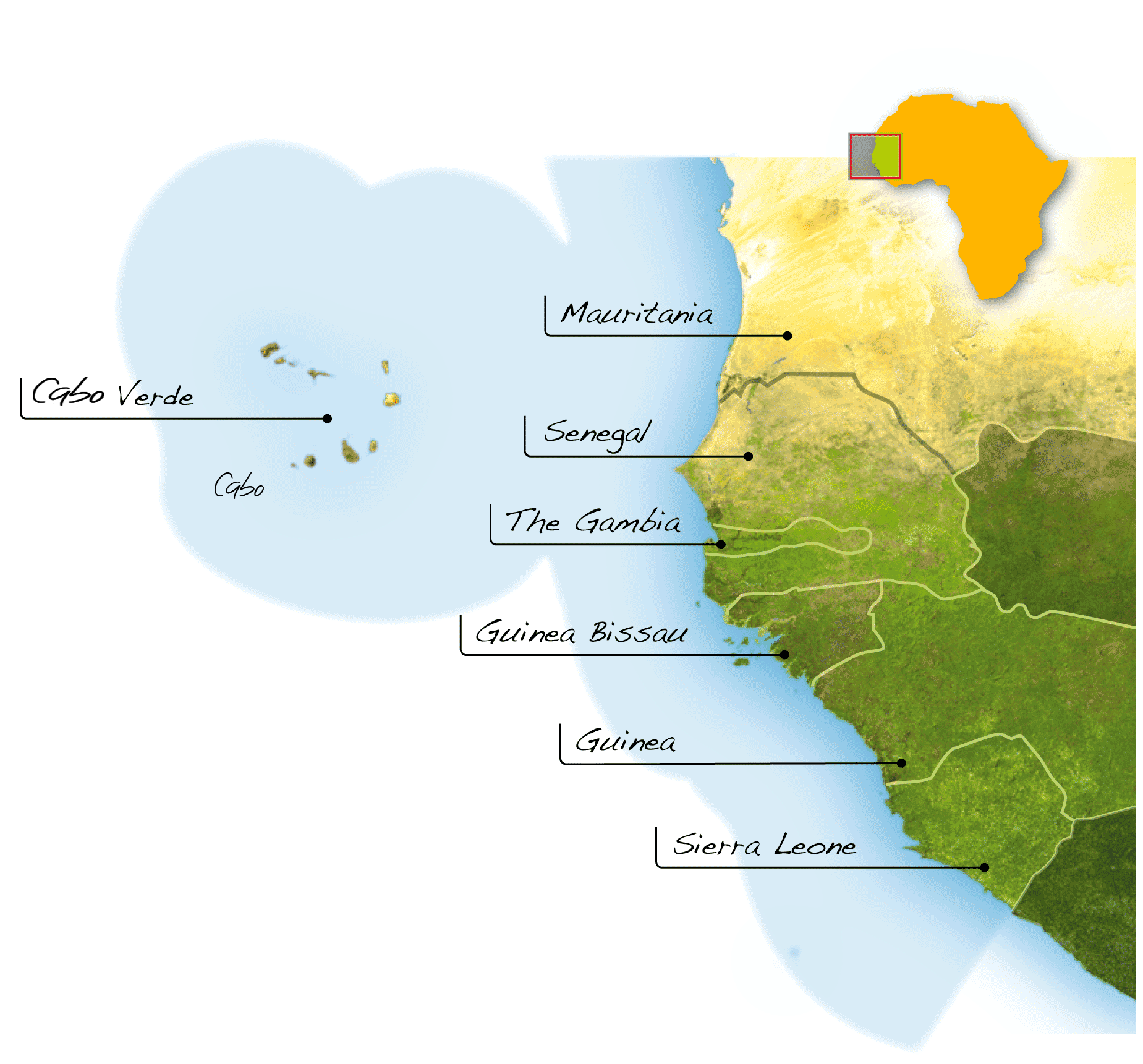Presentation
History

The Sub-Regional Fisheries Commission (SRFC) is an inter-governmental fisheries cooperation organization established by the Convention of 29 March 1985, amended on 14 July 1993 in Praia (Cabo Verde). It has 7 member States: Cabo Verde, The Gambia, Guinea, Guinea-Bissau, Mauritania, Senegal and Sierra Leone. Its headquarters are located in Dakar, Senegal.
Mandate
The SRFC is an institution with diversified expertise to enforce the mechanisms of sustainable governance of fisheries resources. It is in line with strengthening the regional cooperation to enhance the sustainable management of fisheries resources in maritime waters under the jurisdiction of member States.
The SRFC obtains its resources from contributions by its Member States the amounts of which are determined on the basis of a biannual budget, and grants from technical and financial partners supporting the implementation of various projects.
Objectives
The SRFC’s purpose is to ensure harmonization of national policies of Member States on the preservation, conservation and exploitation of fisheries resources and strengthen cooperation for the well-being of the populations (Article 2 of the SRFC Convention of 1985), particularly in the following areas:
- Ensuring harmonization and consistency of national fisheries policies, with regards to the conservation and exploitation of fisheries resources.
- Fostering sub-regional cooperation for monitoring, control and surveillance of fisheries zones, including providing institutional, legal and operational support to eliminate illegal, unreported and unregulated (IUU) fishing.
- Strengthening human capacities to undertake fisheries research activities.
- Reinforcing the scientific and technical information system.
- Ensuring adoption of joint strategies by international bodies.
Gouvernance
The SRFC is articulated on tree constituve bodies:
A vast and productive marine area
Geographic data
- Two large marine ecosystems (The Canary current and the Gulf of Guinea)
- Size of member State territories: 1.6 M km2
- Population (2010): 37 million (70% in coastal areas)
- Coastline: 3,500 km
- Size of Exclusive Economic Zones: 1.55 M km2
Economic data
Average per capita fish consumption: 20.7 kg/year
Estimated catches: 2 million tons/year, of which 77% are small pelagics (sardinella, mackerel, ethmalosa, etc.) of low commercial value but vital for ensuring food and nutrition security of populations of member States.
Other species, mainly exported to other continents (especially to Europe and Asia):
- 12% demersal fish (nile perch, grouper, porgies, etc.);
- 2% cephalopods (octopus, squid and cuttle-fish);
- 2% tuna (coastal or deep-sea);
- 1% crustaceans (shrimps, crabs or lobsters).
Fishing potential: 2.203 million tons all species combined.
Contribution of the fisheries sector to national economies: between 02 and 06% of GDP.
Estimated value
- Catches: 1.5 billion US dollars per year.
- Exports (2011): 983 million US dollars per year.
Employment
The maritime fishing sector provides approximately 1 million jobs in the sub-region of which about one half by fishermen.
Fleet (fishing effort)
Catches are made by nearly:
- 41,000 canoes/boats;
- Over 1,000 industrial fishing vessels, including 600 foreign vessels (European Union, China, etc.).
These figures do not include catches of illegal fishing, a real scourge for the sub-region, and the elimination of which is a priority for the SRFC.



